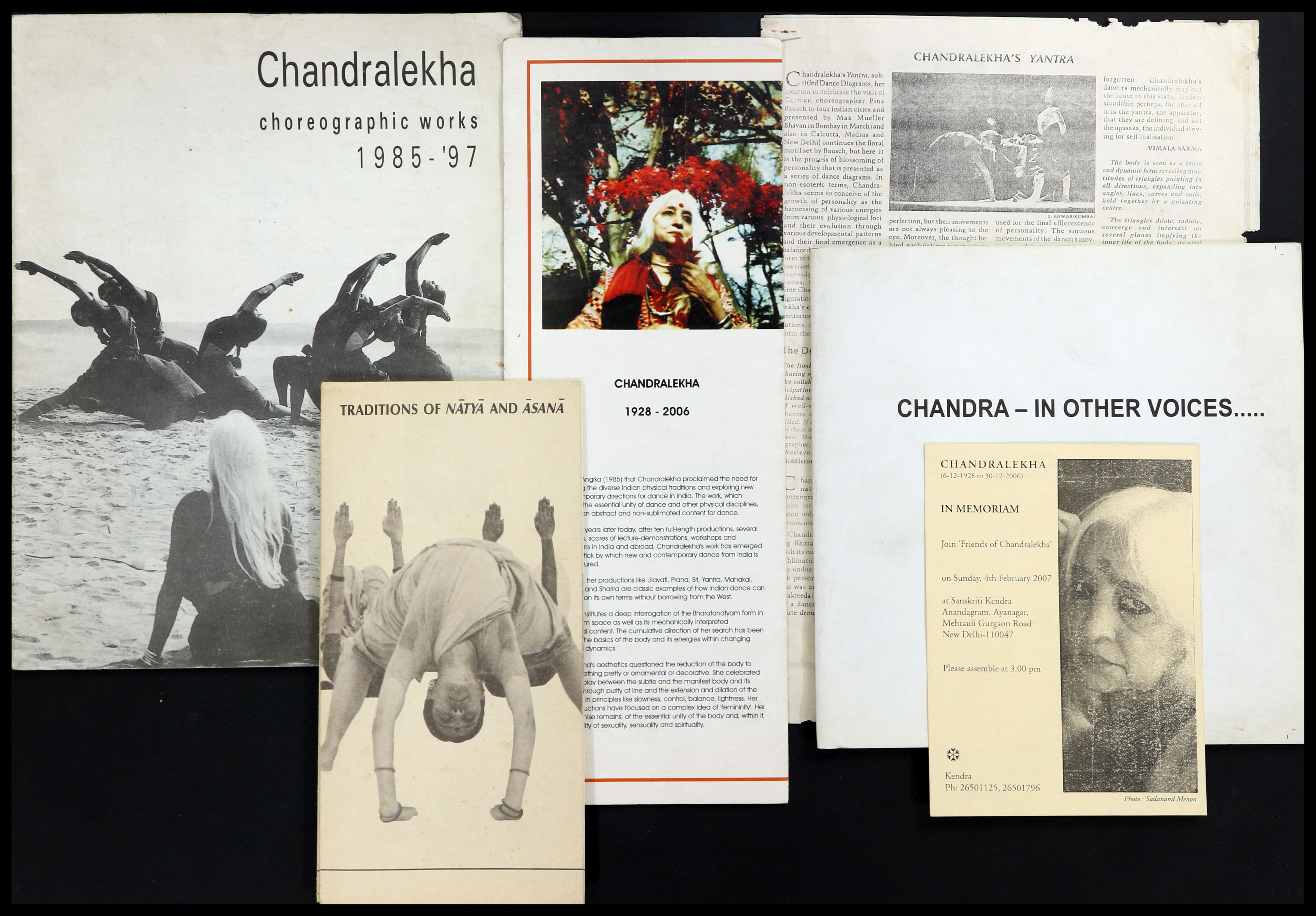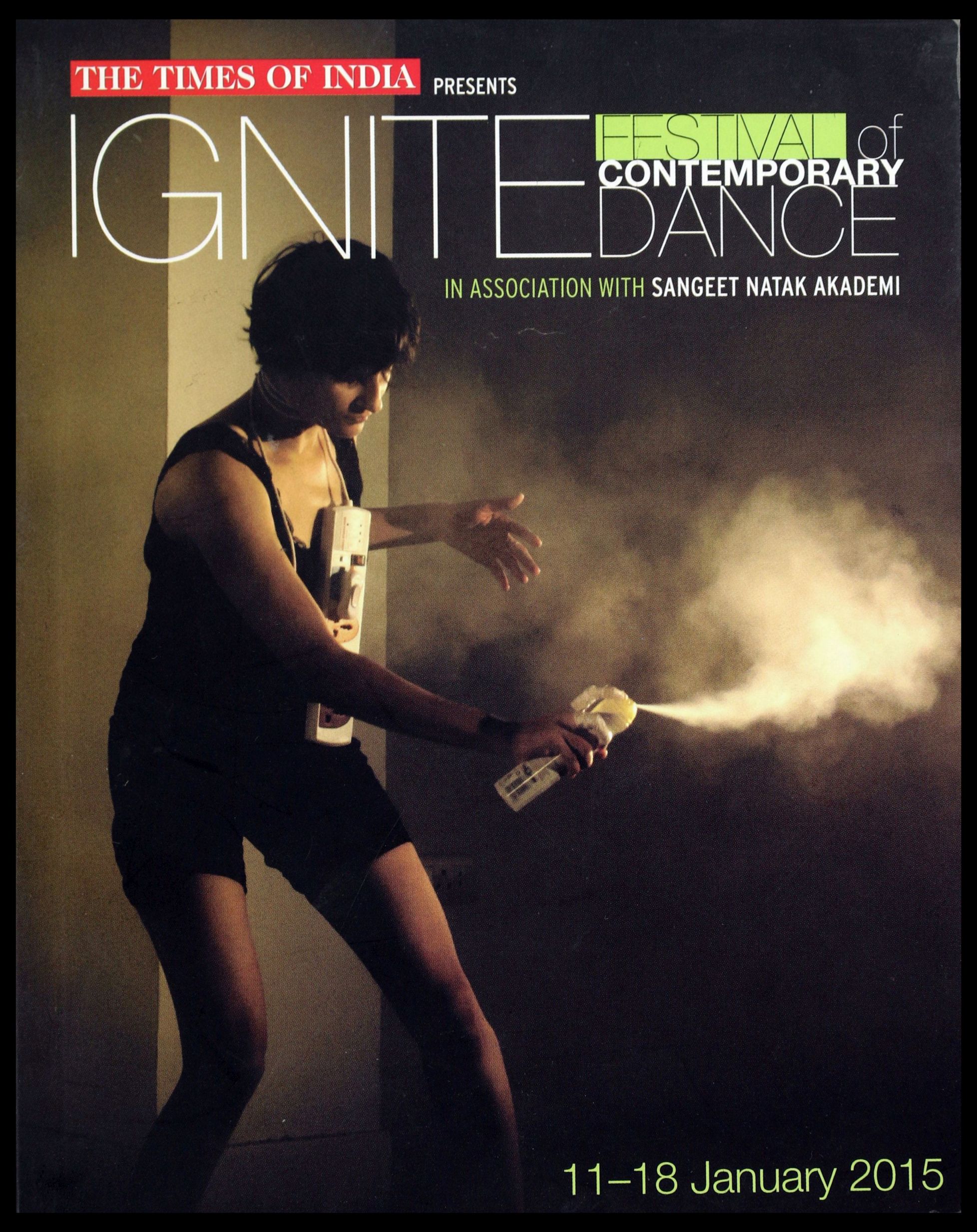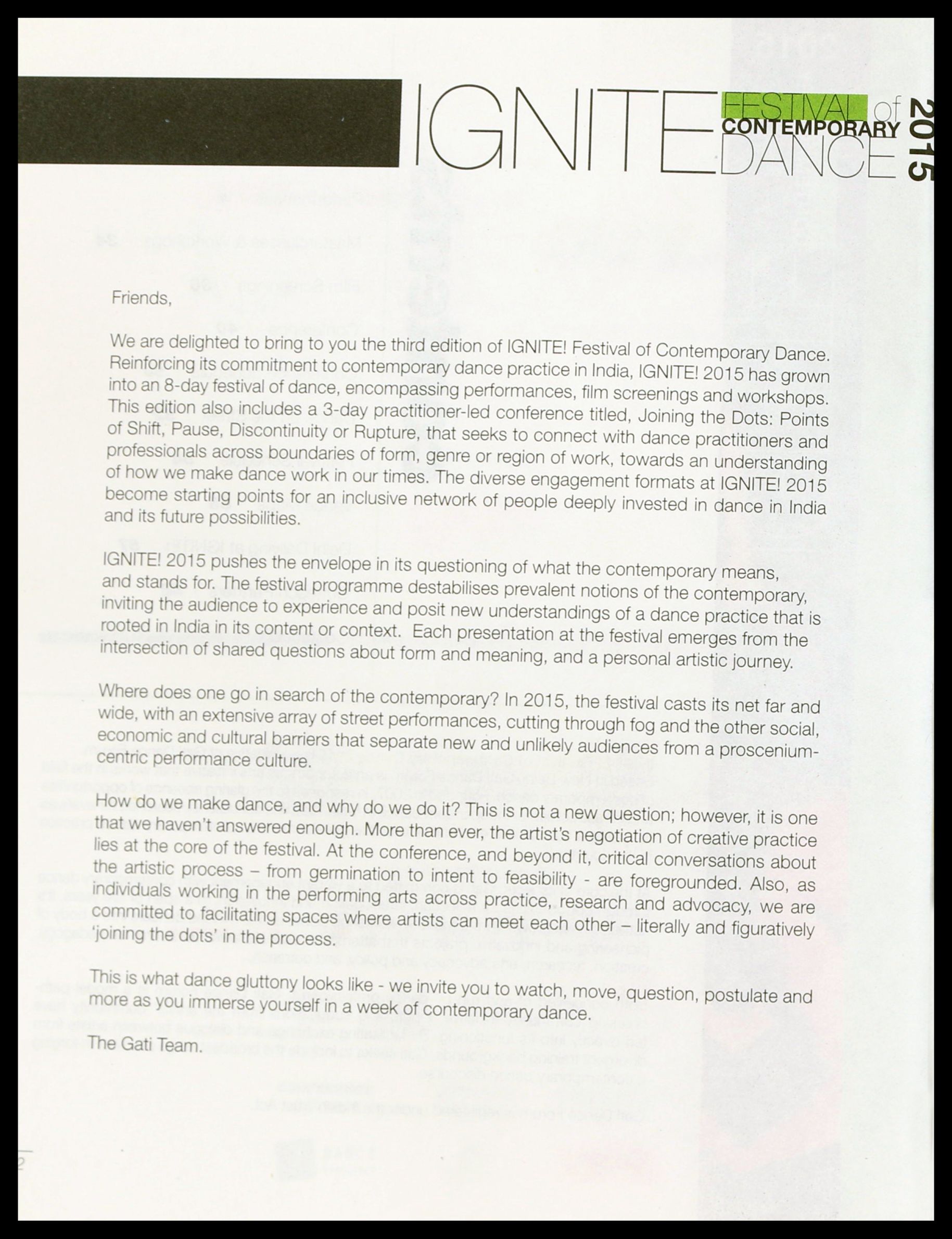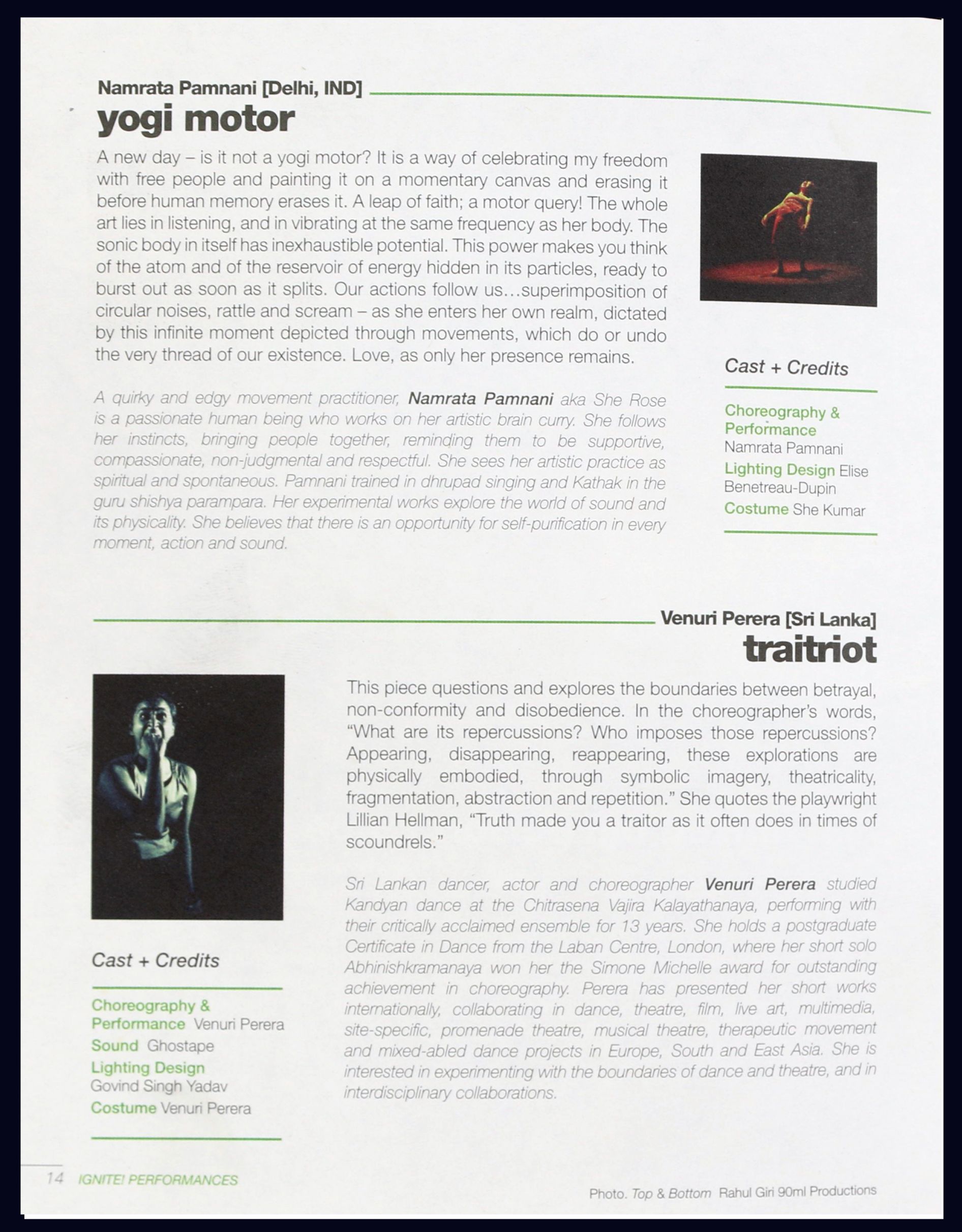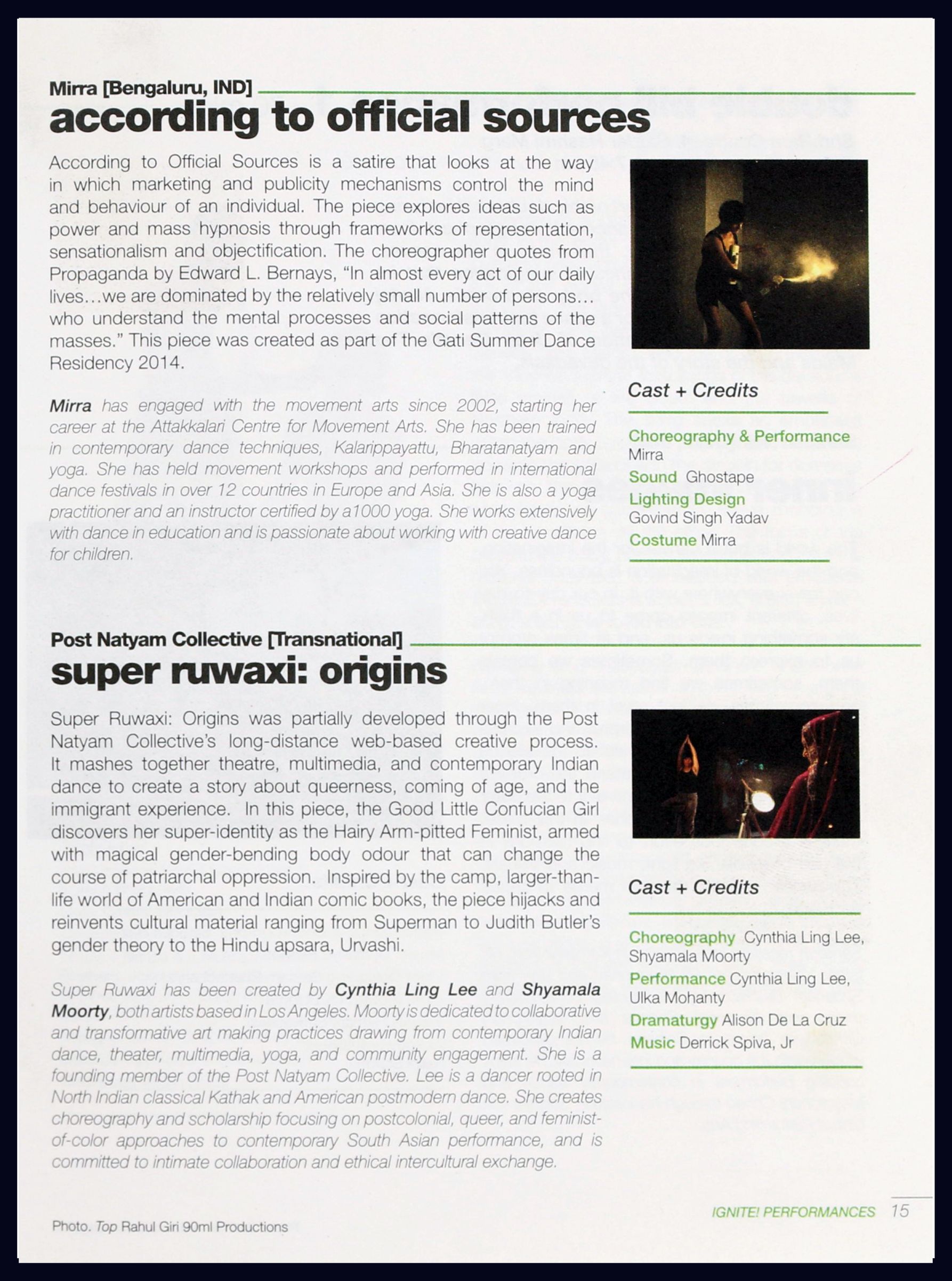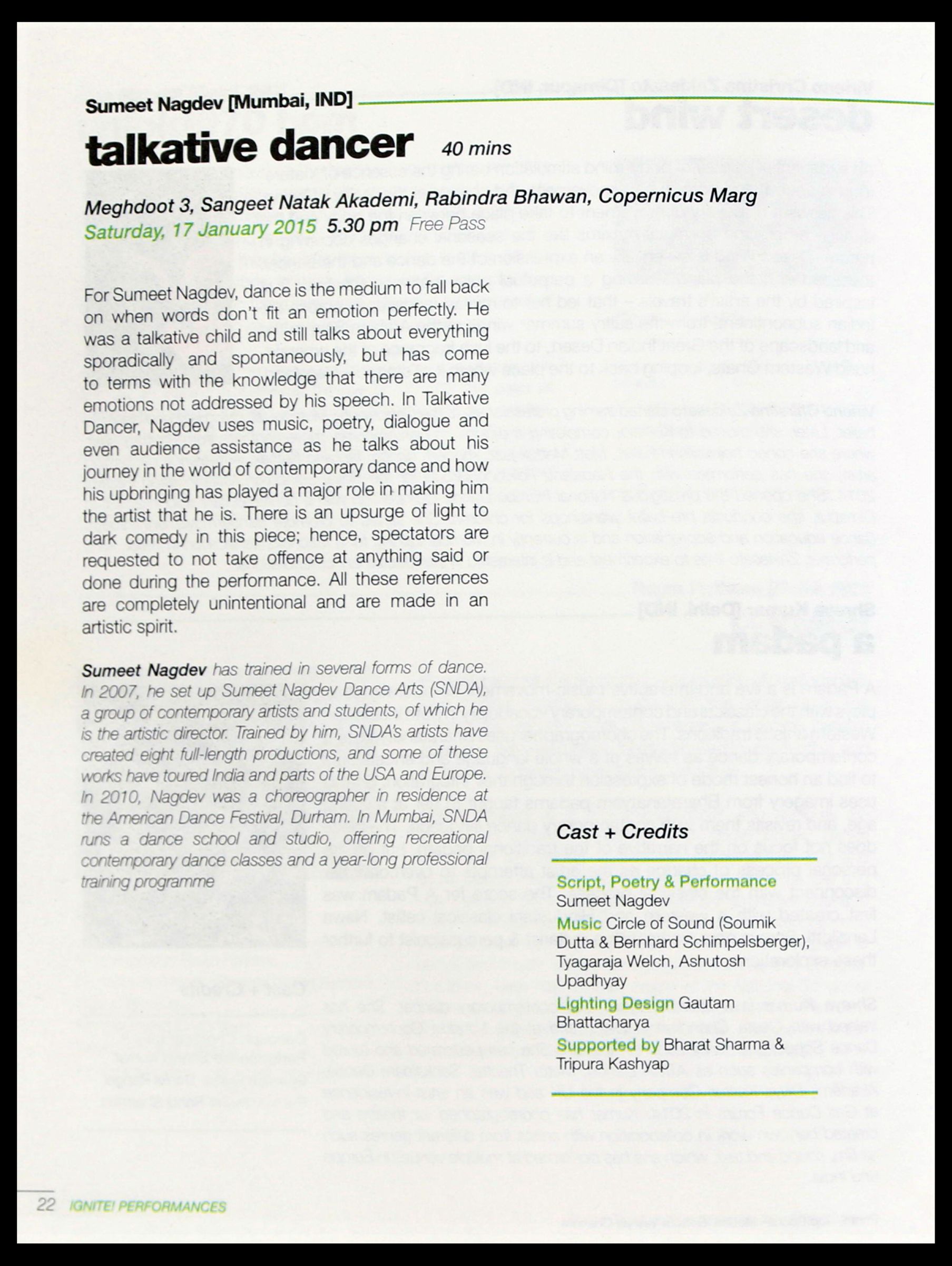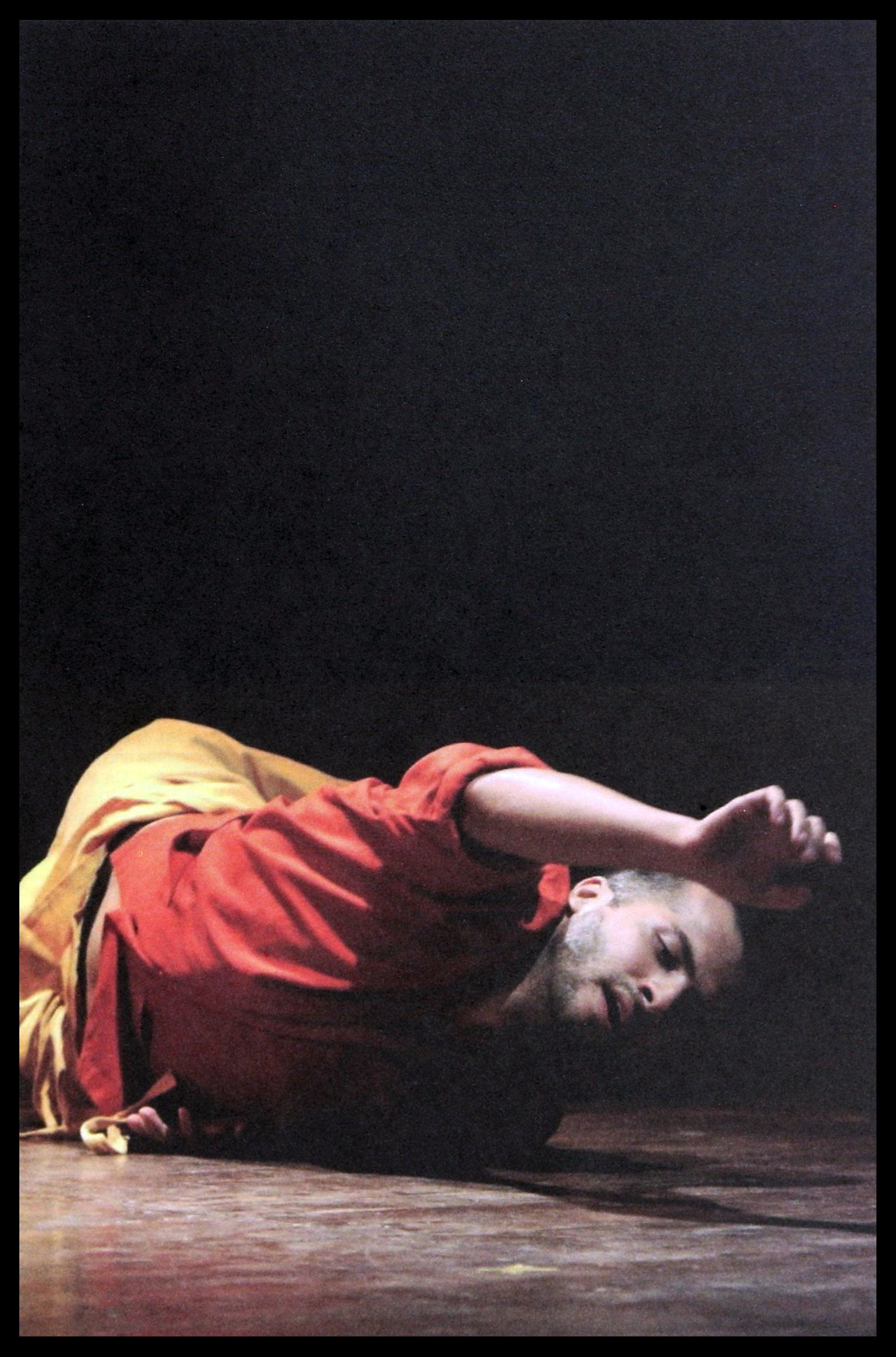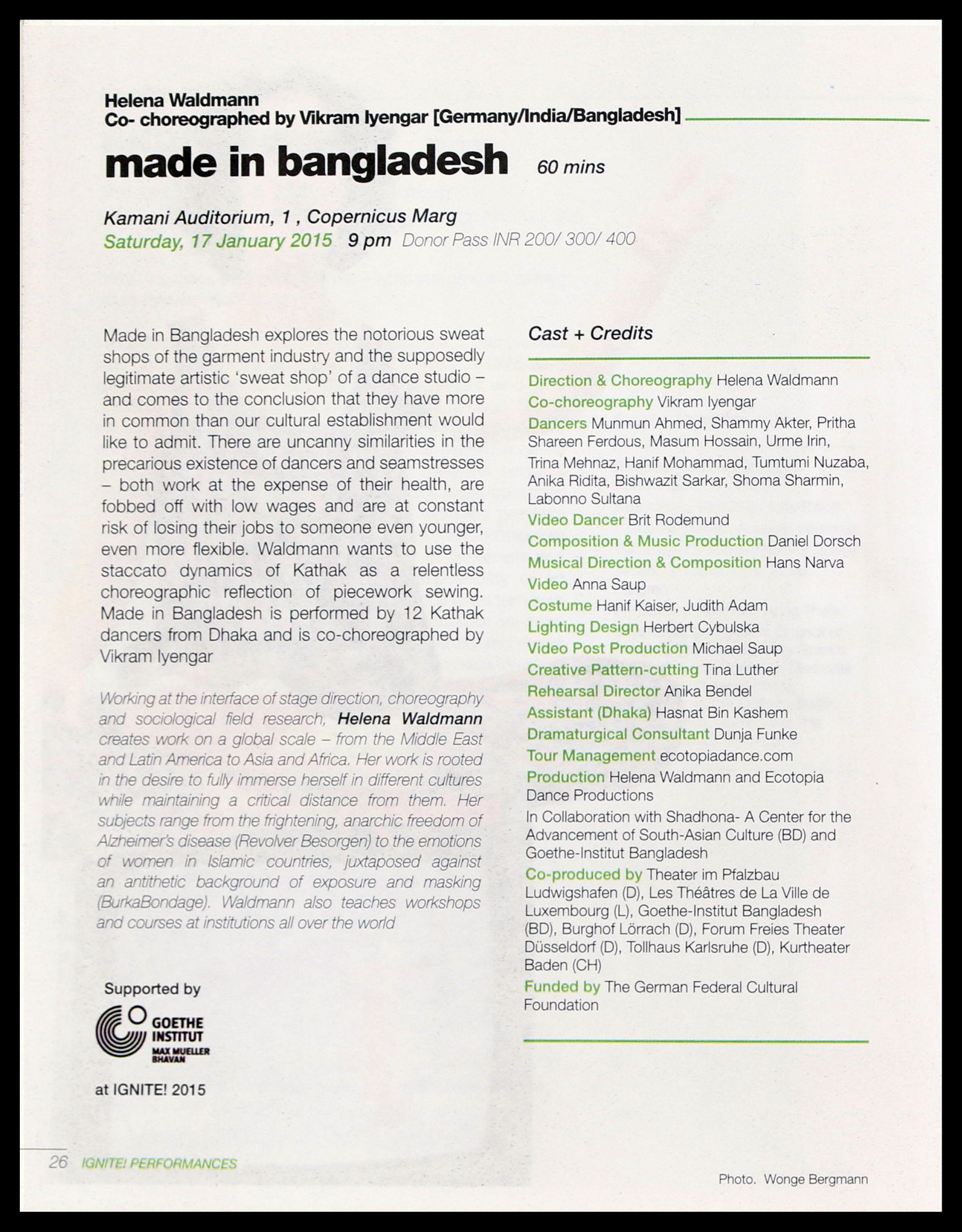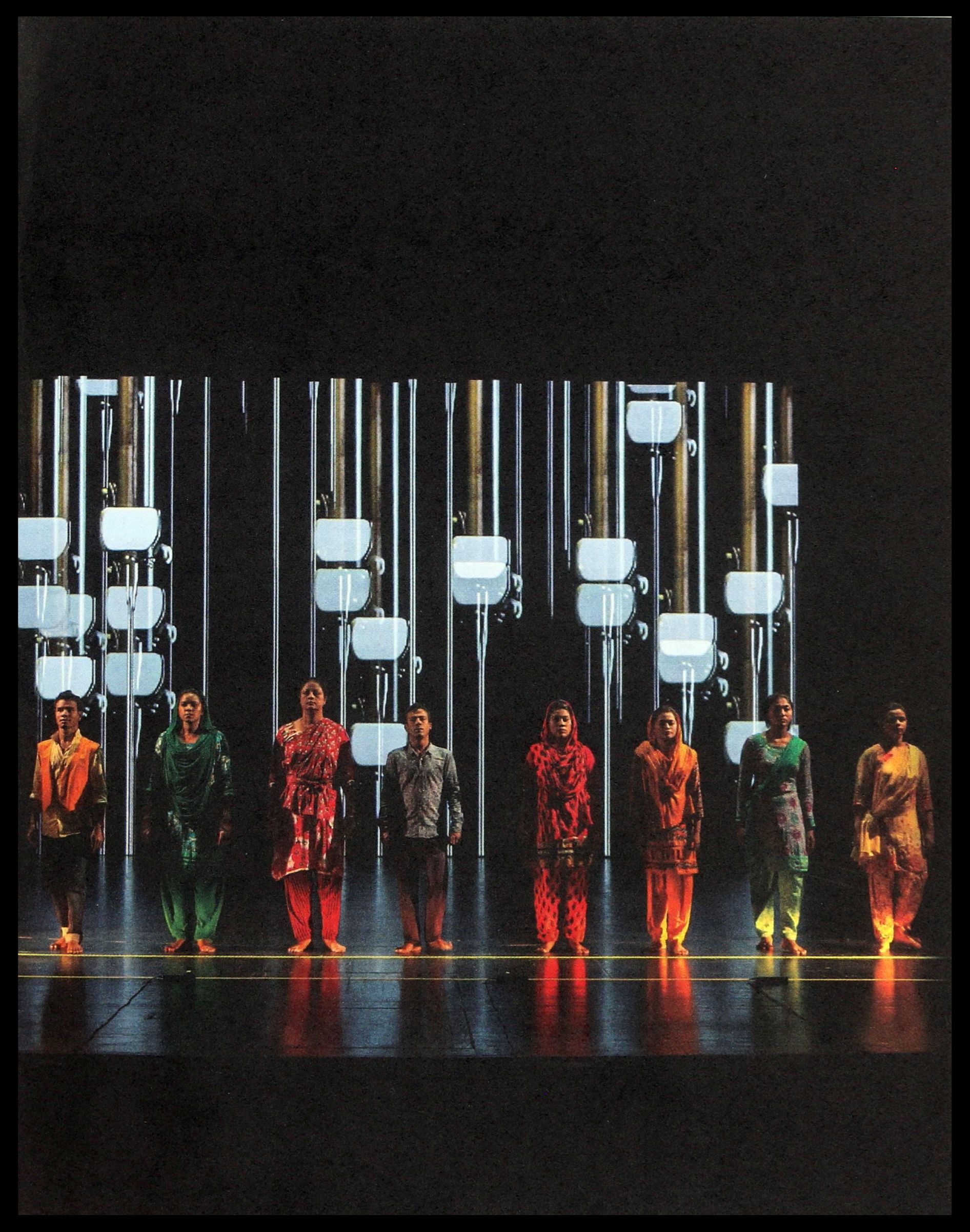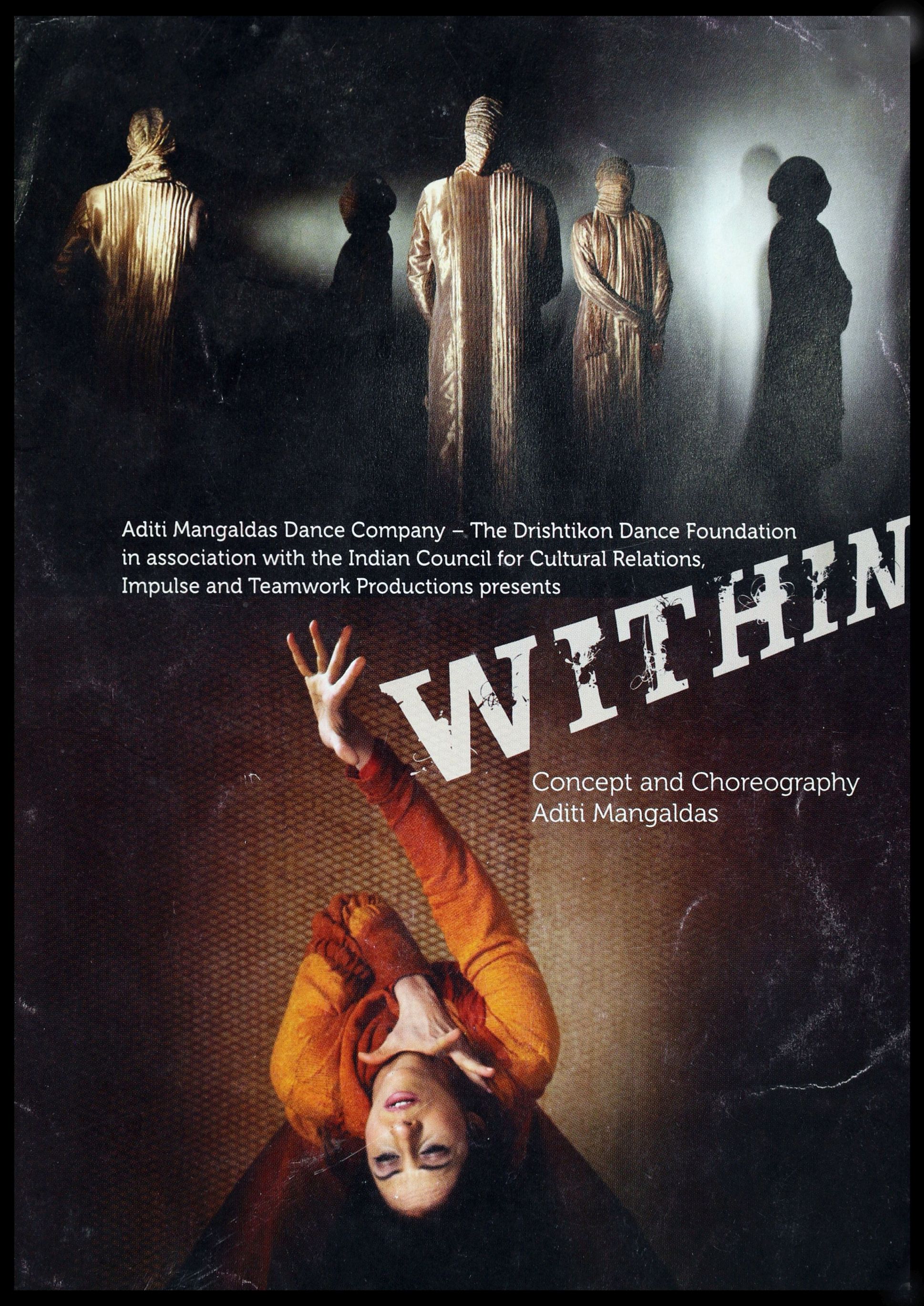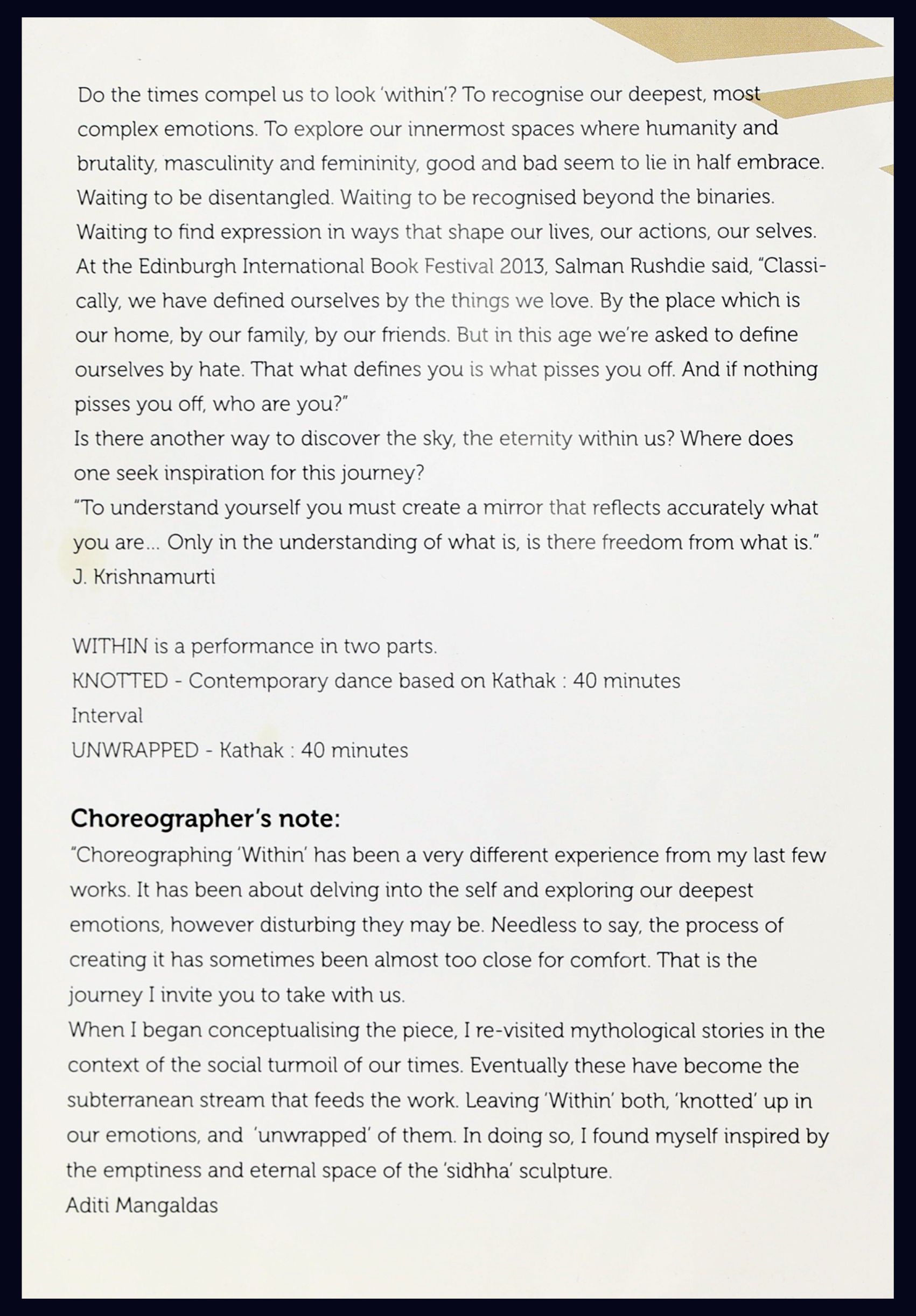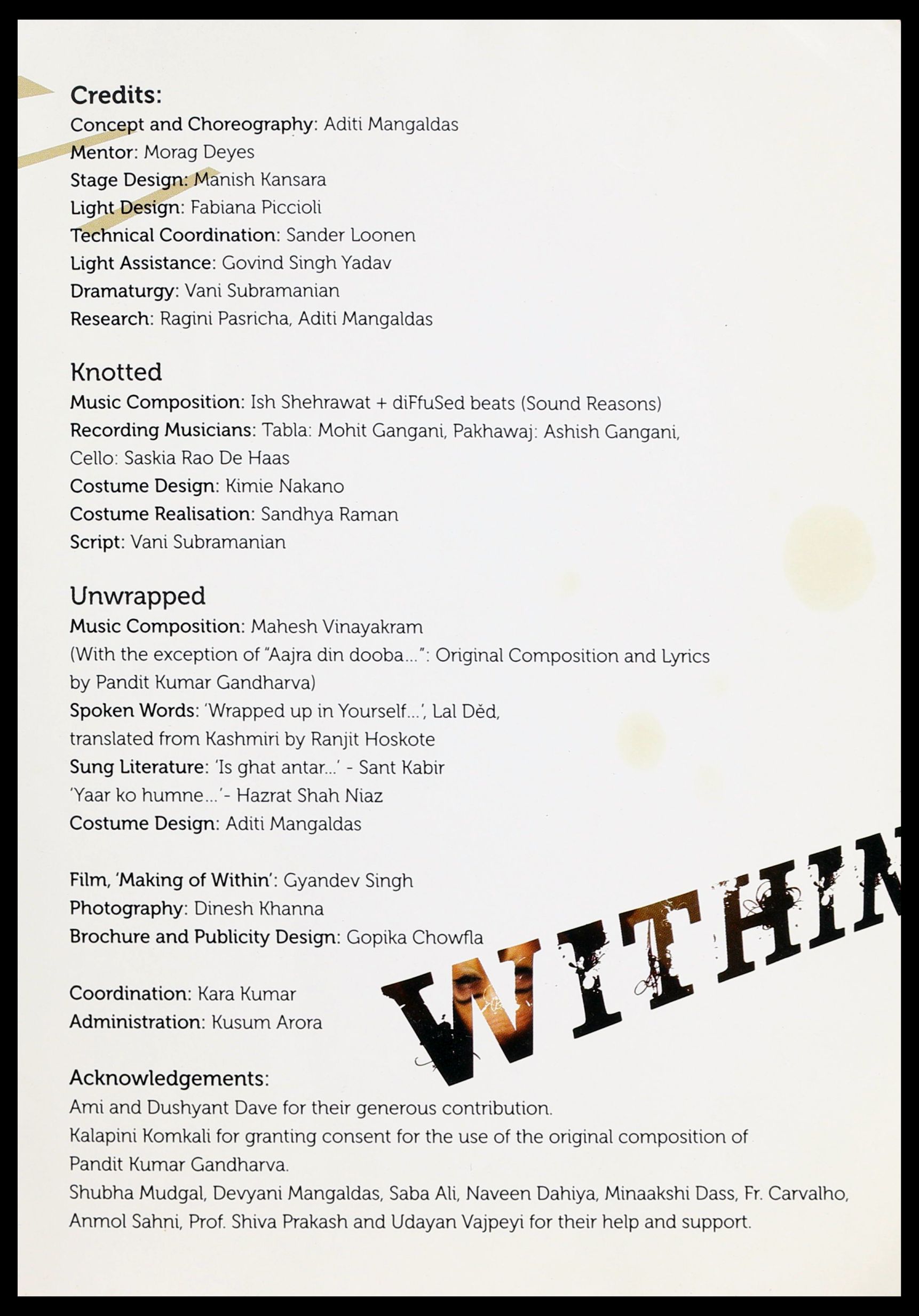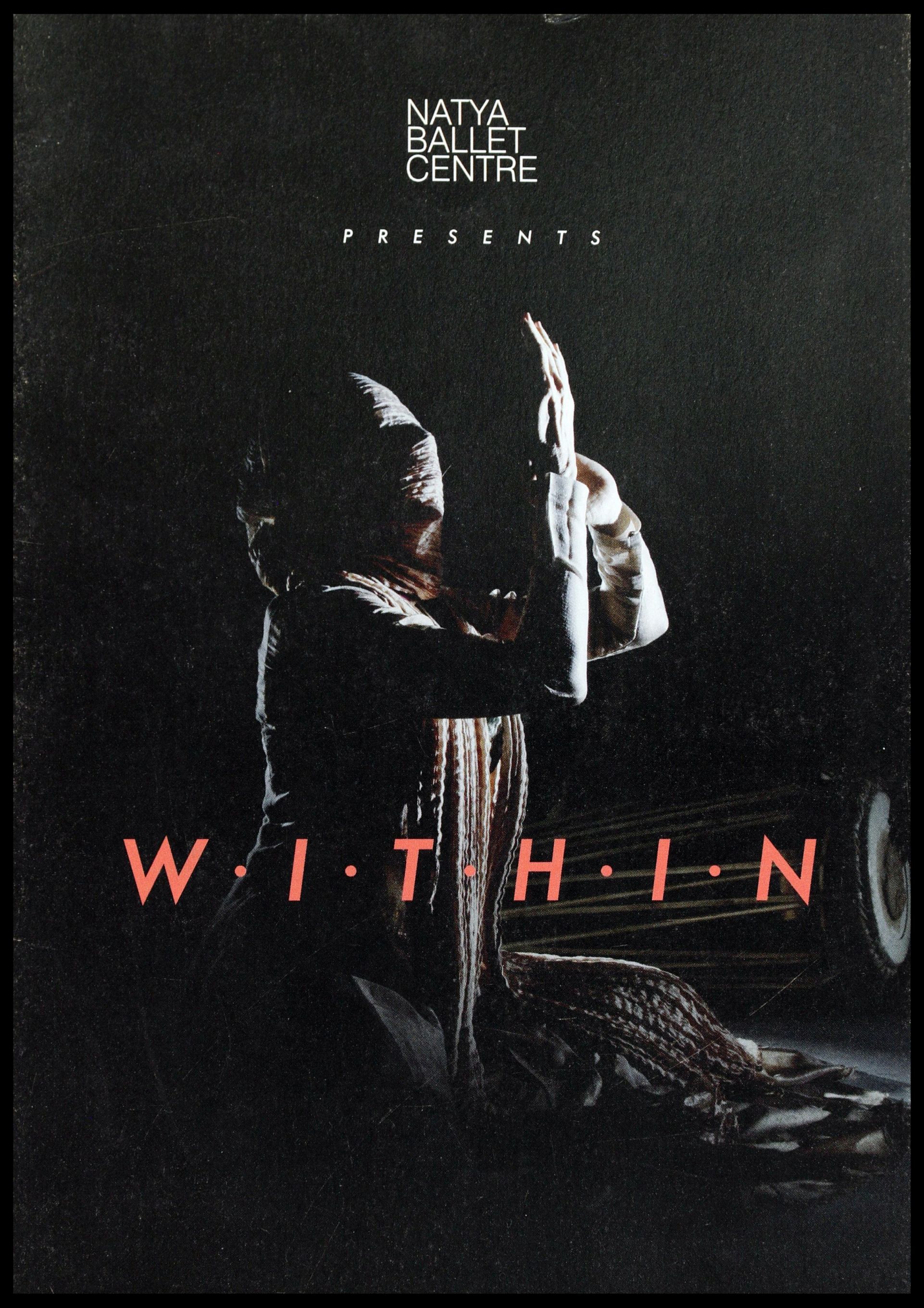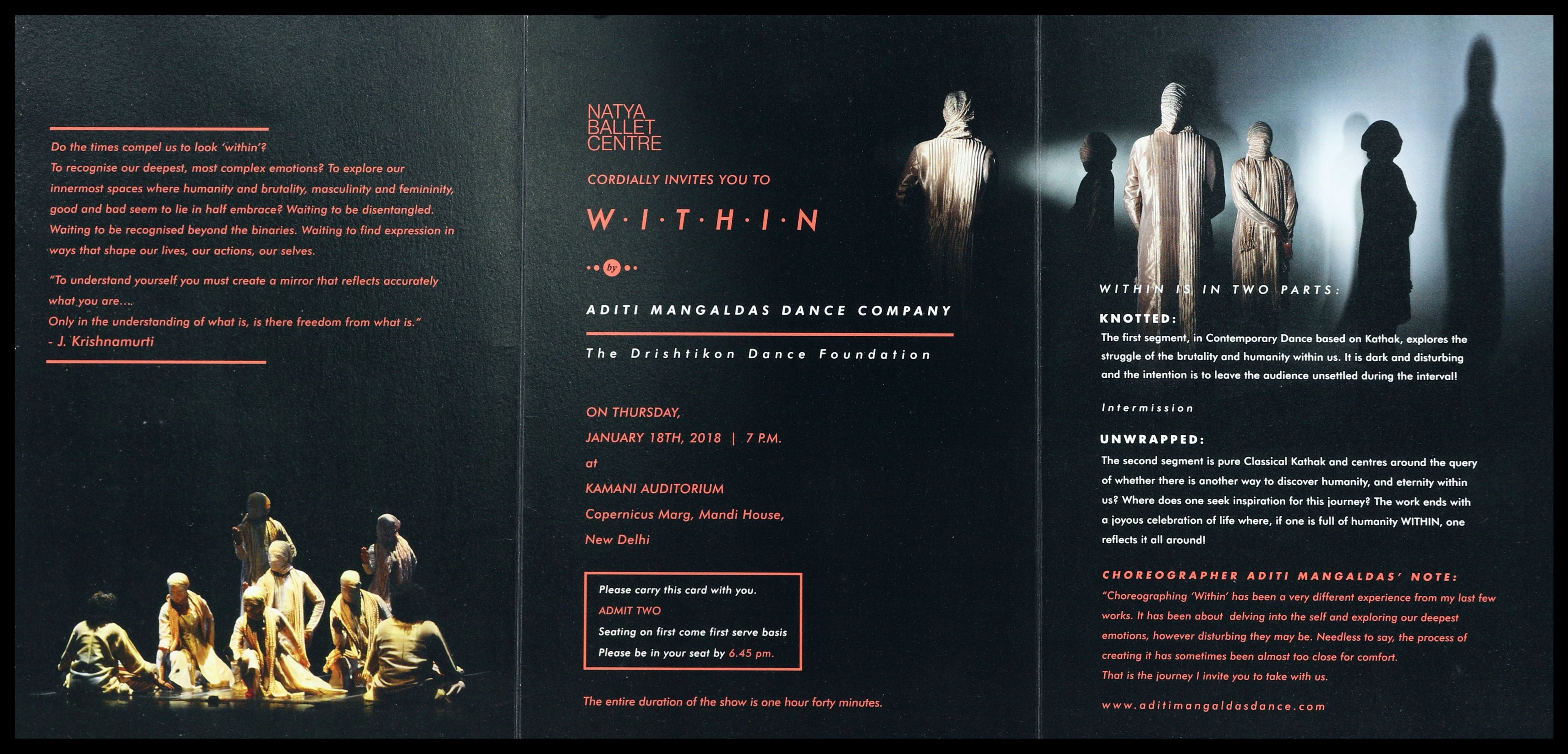Chandralekha
Chandralekha was a Bharatanatyam dancer and a pioneer of contemporary dance based on classical traditions. In the 1950’s, she trained with Guru Kancheepural Ellappa Pillai, and soon was critically acclaimed for her skills. Chandralekha moved away from the performing arts scene in the 60’s, “rejecting the sublimated content of the dance and its commercial/market entertainment values.” 20 years later, she re-entered the dance community, with new pieces that recontextualized classical forms with contemporary energy, interpreting the body with modernity. Chandralekha's pieces explored her views of the body- the geometry, the spirituality, the erotic, the breath. In her own words, “In the body, there is no difference between sensuality, sexuality, spirituality – the three are amalgam. We need all that.”
IGNITE festival of Indian dance

The eight day festival, packed with performances, workshops, screenings, and panels questions what contemporary dance means and stands for. Supported by a variety of entities most notably Sangeet Natak Akademi, the British Council, the Norwegian Embassy, and the National Arts Council of Singapore, it is evident that these partners see value in contemporary forms and their viewing. The support by Sangeet Natak Akademi is noteworthy, as their presence emits a level of official support for contemporary dance in India. The many pieces perform touch on a range of themes and modes of expression, such as in the piece, Traitriot, which explores the boundaries between betrayal, non-conformity and disobedience. Another notable piece, Talkative Dancer, the performer uses a mix of music, poetry and dialogue to illustrate how some emotions can only be said movement.
WITHIN

Together, the two performances of WITHIN demonstrate the increased recognition of Indian fusion dance both in India and the diaspora. The piece itself examines the complexity of emotions, beyond societal binaries, with the main question being, “do the times compel us to look ‘within’ ?” The performance has two parts: Knotted, which is contemporary dance based on Kathak, and Unwrapped, which is solely Kathak. The choreographer, Aditi Mangaldas notes that the inspiration for the piece began when she revisited mythological stories in the context of the social turmoil of the present day. This blending of mythology and the present day is evident in the fusion of styles, the classic and the contemporary. The significance of the two performances can be seen when examining the location and sponsorship. The 2018 performance occurred in Delhi with the Natya Ballet Centre. The performance in Britain, was sponsored by ICCR and the British Council, indicates governmental support for contemporary dance and there being a stage for it in the diaspora.





